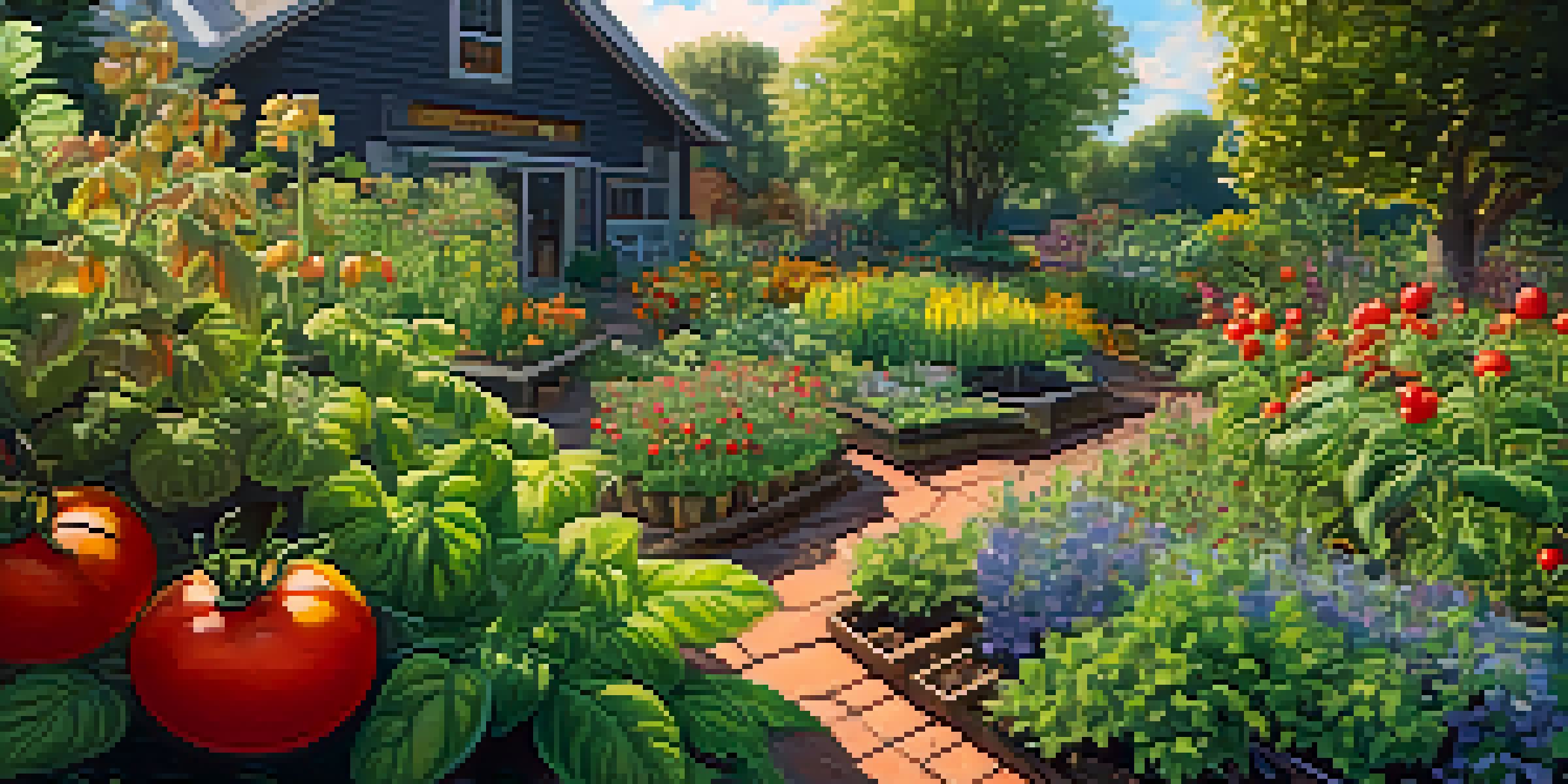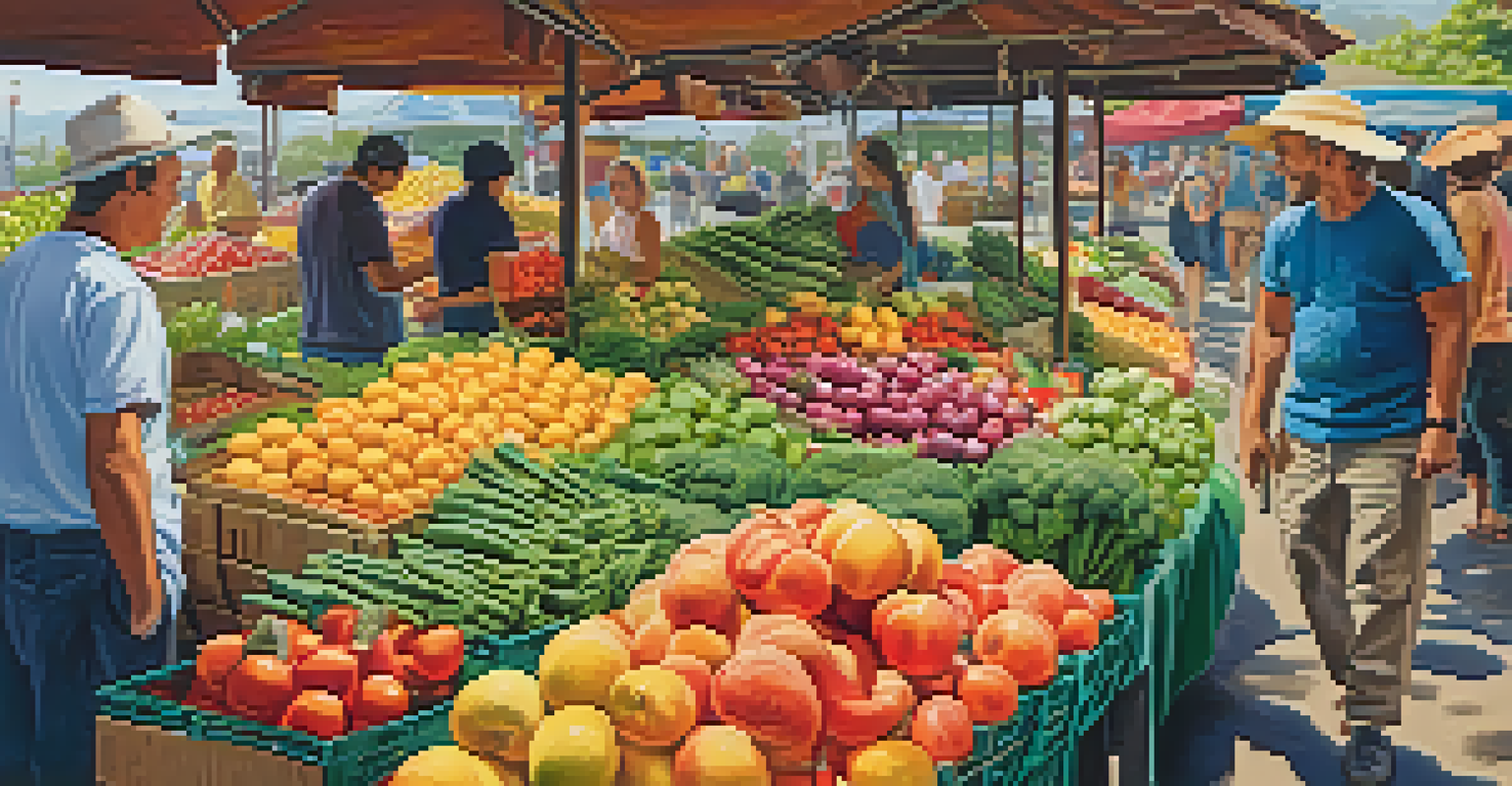The Importance of Diversity in Permaculture Systems

Diversity: The Backbone of Permaculture Systems
Diversity in permaculture refers to the variety of plants, animals, and microorganisms that coexist in a given system. Just as a diverse community fosters resilience, varied species contribute unique benefits to the ecosystem. This interconnected web helps support each component, ensuring that if one part falters, others can thrive and compensate.
The greatest threat to our planet is the belief that someone else will save it.
Think of a permaculture garden as a symphony orchestra. Each instrument, or species, plays a distinct role, but together they create beautiful harmony. For instance, while a tomato plant may face pest issues, companion plants like basil can deter these pests, showcasing how diversity can lead to a more robust system.
Moreover, biodiversity enhances nutrient cycling and soil health. Different plants have varying root structures and nutrient needs, which means they can utilize resources more efficiently. This is akin to a team where each member brings a unique skill set, ultimately leading to higher productivity and sustainability.
Boosting Resilience Through Ecological Diversity
In permaculture, resilience is the ability of a system to recover from disturbances, such as pests or climate variations. Diverse ecosystems are inherently more resilient because they can better adapt to changing conditions. When various species share a space, the likelihood that some will thrive despite adverse circumstances increases.

Imagine a forest where multiple tree species coexist. If a disease targets one type, others can continue to grow and support the ecosystem. This principle applies to permaculture gardens as well, where planting a mix of crops can help ensure food security even when faced with challenges like drought or disease.
Diversity Builds Resilience
A diverse ecosystem can better adapt to challenges, ensuring that if one species falters, others can thrive.
By embracing diversity, permaculture practitioners can create systems that withstand environmental pressures. This is not just beneficial for the plants; it also supports wildlife and beneficial insects, creating a balanced ecosystem that can flourish over time.
Enhancing Productivity with Plant Diversity
Diversity is a key player in maximizing productivity in permaculture systems. When multiple crops are grown together, they can complement each other, leading to higher yields. This practice, known as polyculture, contrasts with monoculture farming, where a single crop dominates the landscape.
In every walk with nature, one receives far more than he seeks.
For example, intercropping beans with corn allows the beans to fix nitrogen in the soil, enriching it for the corn. This relationship not only boosts the health of the plants but also optimizes space and resources. It's like a well-planned dinner party where guests complement each other's strengths, creating a more enjoyable experience for everyone.
Furthermore, diverse planting strategies help mitigate risks associated with crop failure. When one type of crop may not perform well in a given season, another may flourish, ensuring a steady harvest. This strategy is essential for sustainable food production and supports local economies by providing varied crops throughout the year.
Fostering Soil Health Through Biodiversity
Healthy soil is the foundation of any successful permaculture system, and biodiversity plays a crucial role in maintaining that health. A variety of plants contributes to a rich microbial community in the soil, enhancing nutrient availability and soil structure. This interaction is vital for sustaining long-term agricultural productivity.
Consider the role of cover crops, which are often planted between main crops. These plants not only prevent erosion but also improve soil structure and fertility. When they decompose, they add organic matter back into the soil, much like a natural composting system working behind the scenes.
Enhanced Productivity Through Variety
Growing multiple crops together maximizes yields and mitigates risks associated with crop failure.
Moreover, diverse root systems help aerate the soil and improve water retention. Just as a diverse community benefits from varied perspectives, a variety of plant roots creates a healthier, more productive soil ecosystem. This ultimately leads to stronger plants that can better withstand environmental stresses.
Encouraging Wildlife and Beneficial Insects
Diversity in permaculture also attracts a range of wildlife and beneficial insects, which are essential for pollination and pest control. A diverse landscape creates habitats for various species, from birds to beneficial beetles, fostering a thriving ecosystem. This natural balance reduces the need for chemical interventions, promoting a healthier environment.
Think of your permaculture garden as a welcoming neighborhood. When you plant a variety of flowers, vegetables, and herbs, you invite different pollinators and predators into your space. For instance, flowering plants can attract bees, which are critical for pollination, while certain plants may lure predatory insects that keep harmful pests at bay.
By intentionally designing systems that support biodiversity, permaculture practitioners can create a self-sustaining environment. This not only leads to healthier crops but also contributes to the overall health of the ecosystem, showcasing the interconnectedness of all living things.
Cultural Diversity: A Vital Element in Permaculture
When we talk about diversity in permaculture, it's not just about plants and animals; cultural diversity plays a significant role too. Different cultures bring unique knowledge and practices that can enhance permaculture systems. By integrating these diverse perspectives, we can create more inclusive and effective agricultural practices.
For example, indigenous farming methods often emphasize the importance of local plants and traditional growing techniques. These practices may include planting specific crops at certain times based on lunar phases or using particular methods to enhance soil fertility. By learning from various cultural traditions, we can enrich our understanding and application of permaculture.
Cultural Diversity Enriches Practices
Integrating diverse cultural knowledge can lead to more effective and inclusive permaculture systems.
Moreover, fostering cultural diversity encourages community engagement and collaboration. When people from different backgrounds come together to share their experiences and knowledge, it creates a vibrant learning environment. This collective wisdom can lead to innovative solutions for sustainable living, benefiting both the ecosystem and the community.
Embracing Diversity for a Sustainable Future
In conclusion, embracing diversity in permaculture systems is crucial for building resilience, enhancing productivity, and fostering ecological balance. Each element within a diverse system plays a vital role, contributing to the overall health and sustainability of the environment. As we face global challenges like climate change and food insecurity, these principles become even more significant.
By recognizing the importance of diversity, we can create permaculture systems that not only survive but thrive. This approach mirrors nature's own strategies, which have successfully sustained ecosystems for millennia. It's a reminder that diversity is not just a goal; it's a necessity for long-term success.

Ultimately, adopting diverse practices in permaculture is a step towards a more sustainable future. As we cultivate our gardens, let’s also cultivate our understanding and appreciation of the many forms of life that share this planet with us, ensuring we leave a healthy world for generations to come.